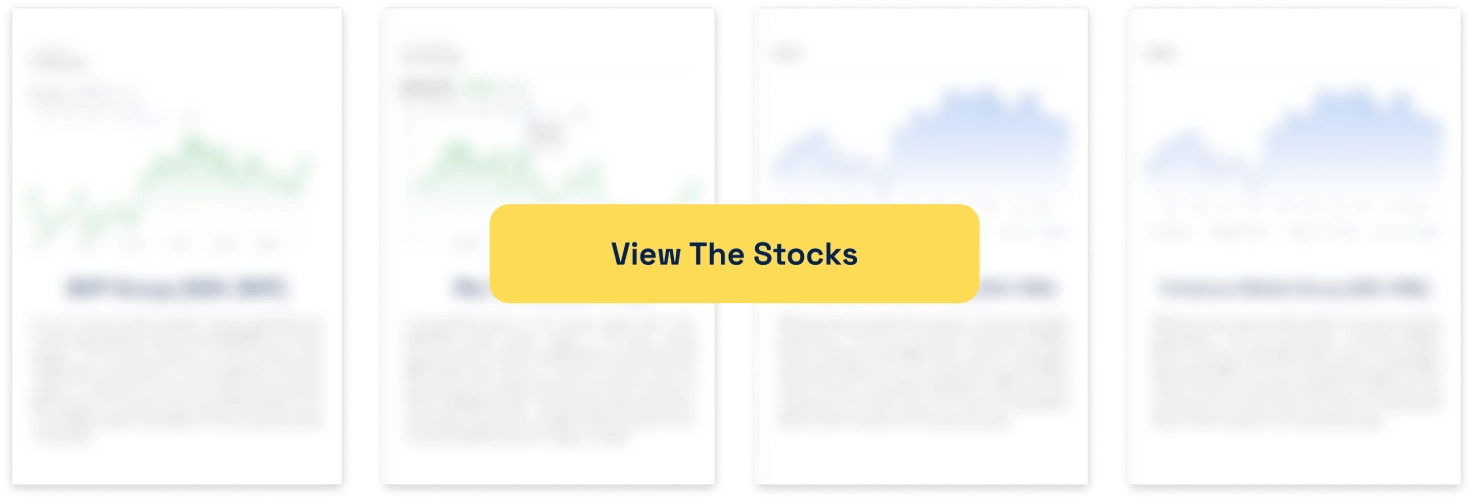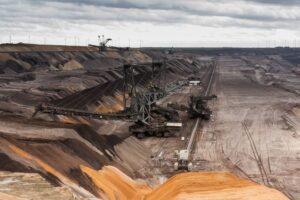Fortescue FY25 Results: What It Says About the Iron Ore Market
![]() Ujjwal Maheshwari, August 26, 2025
Ujjwal Maheshwari, August 26, 2025
Fortescue Metals Group (ASX:FMG) has delivered its FY25 results and the numbers tell two very different stories. On one hand, profits have fallen to their lowest level in six years as weaker iron ore prices bite. On the other hand, shipments hit a record high, proving the company’s operational muscle remains intact. For investors, this update isn’t just about Fortescue’s balance sheet; it’s a window into the future of the iron ore price in 2025, the strength of China’s steel demand, and whether Fortescue’s bold bet on green hydrogen can redefine its long-term outlook.
What are the Best ASX Iron Ore stocks to invest in right now?
Check our buy/sell tips
Opening Snapshot
Fortescue Metals Group (ASX: FMG) released its FY25 results on 26 August 2025, and the market has reacted cautiously. Shares slipped about 2 per cent in early trade as investors digested a steep fall in earnings alongside another year of record iron ore shipments. These results provide a critical window into the health of the global iron ore market, particularly given Fortescue’s position as the fourth-largest exporter worldwide. The results show the duality of Fortescue’s story: on one hand, strong production discipline and operational resilience, and on the other, a challenging pricing environment that has squeezed profits. For investors, the read-through is clear: Fortescue FY25 results are not just about one company’s performance but are a reflection of broader themes shaping the Fortescue iron ore outlook, the trajectory of the iron ore price in 2025, and the implications of demand shifts in China.
Headline Numbers Don’t Look Good
Fortescue reported a net profit after tax of US$3.37 billion for FY25, down sharply from US$5.68 billion in the previous year. That 41 per cent decline marks its weakest result in six years and reflects the pressure from softer iron ore prices. Fortescue’s FY25 profit dropped 41% as weaker iron ore prices hit margins.
Revenue fell around 15 per cent to US$15.5 billion, while underlying EBITDA slipped 26 per cent to US$7.94 billion. EBITDA margin contracted from 59 per cent last year to 51 per cent, showing how much weaker realised prices have filtered through to profitability. It suggests that this margin compression is a key signpost for investors. Fortescue can control costs, but it cannot escape broader commodity cycles.
Dividends also mirrored the lower earnings environment. A final dividend of A$0.60 per share brings the total for the year to A$1.10, representing the lowest payout since 2018. While the payout ratio was steady at around 65 per cent, the decline in per-share returns may weigh on Fortescue’s income-focused investor base. Still, the company’s balance sheet gives comfort, with US $4.3 billion in cash reserves and net debt trimmed to just US $1.1 billion. Costs remained competitive, with Hematite C1 costs at US $17.99 per wet metric tonne, placing Fortescue comfortably in the lowest-quartile global producers. For long-term investors, this cost leadership is a critical defensive asset.
Iron Ore Market has been trending down
The fall in profit was not the result of operational underperformance, but rather the reality of the market environment. The iron ore price in 2025 has been volatile but trending lower. Realised prices for Fortescue’s hematite averaged US$85 per tonne, down from US$103 a year earlier. This decline reflects not just oversupply but also faltering Chinese demand. China remains the biggest swing factor in global steel markets, and the country’s weaker property sector continues to suppress steel production and, in turn, demand for imported iron ore. China’s struggling property market remains the single biggest risk to global steel demand and iron ore prices. Management warned that China’s property sector remains a drag on steel demand.
Investors must ask themselves: Is this weakness cyclical or structural? If Chinese demand is structurally pressured, the iron ore boom era of the past decade may not return in the same way.
Supply dynamics have also been significant. Brazilian producer Vale has restored much of its lost output, while other Pilbara rivals like BHP and Rio Tinto have also maintained strong production. This wave of supply into an already soft demand environment has created a buyers’ market, pushing prices down further. At the same time, macro sentiment around China has seesawed between hopes of government stimulus and continued worries about its real estate sector. Fortescue’s results, therefore, offer more than just corporate reporting; they give investors a direct insight into how well China’s demand is holding up and how oversupplied the market really is.
Fortescue’s Strategic Moves
Fortescue is balancing cost discipline with its long-term decarbonisation ambitions. The company continues to expand shipments while pruning uneconomic hydrogen projects, highlighting both operational strength and the risks of transitioning beyond iron ore.
Record Shipments and Operational Discipline
Fortescue delivered record shipments of 198.4 million tonnes in FY25, a 4 per cent year-on-year increase. This result highlights the company’s ability to expand output even in a softer market. For FY26, guidance sits at 195–205 million tonnes, with Iron Bridge magnetite expected to contribute 10–12 million tonnes. This operational strength underpins Fortescue’s resilience.
Cost Leadership and Balance Sheet Strength
Fortescue maintained Hematite C1 costs at US $17.99 per wet metric tonne, ensuring it remains one of the lowest-cost producers globally. The balance sheet is also robust, with US$4.3 billion in cash and net debt reduced to just US$1.1 billion. For investors, this financial discipline provides a crucial safety buffer.
Capital Expenditure and Project Write-downs
FY25 capex was US $3.9 billion, with FY26 guidance of US $3.3–4.0 billion for metals and US$300 million for energy. The company cancelled its hydrogen projects in Arizona and Gladstone, resulting in a US$150 million writedown. This decision reflects a more disciplined allocation of capital amid uncertain project economics. Capex on green hydrogen reflects Fortescue’s shift beyond iron ore.
Progress on Green Hydrogen and Green Iron
Despite cutting uneconomic projects, Fortescue reaffirmed its long-term commitment to green hydrogen projects and green iron. Its pilot plant, which aims to use hydrogen rather than coal in steelmaking, has been delayed until 2026. The company is still targeting net zero operational emissions by 2030, with up to US $1.2 billion in energy transition spending flagged for FY26.
Strategic Implications for Investors
Fortescue’s strategic moves show a dual approach: maintaining its dominance in iron ore while investing selectively in decarbonisation. Investors should view its green push as both a hedge against future demand shifts and a potential growth engine, even if near-term execution risks remain.
What It Signals for the Iron Ore Market
So, what do these results really say about the state of the market?
First, strong shipment volumes highlight that demand, while soft, has not collapsed. Fortescue was able to move nearly 200 million tonnes in FY25, suggesting that Chinese buyers are still taking cargoes even at lower prices. This provides some support for the iron ore market in the short term.
Second, the collapse in realised pricing tells the other half of the story. Average revenue per tonne dropped nearly 20 per cent year on year, showing just how difficult it is for producers to extract a margin when supply is abundant and buyers have leverage. For investors, this underscores that iron ore remains a commodity heavily influenced by short-term market balances and geopolitical shifts.
Finally, the shift in capex priorities towards green projects signals a recognition that iron ore alone cannot sustain Fortescue’s growth trajectory forever. The company’s pivot into green hydrogen and green iron represents a strategic hedge against a long-term decline in Chinese steel demand. Yet it also means near-term returns could be pressured as money is funnelled into projects that may not yield cash flow for years. This balancing act between short-term shareholder returns and long-term sustainability will define Fortescue’s trajectory in the next decade.
Risks & Points of Attention
Investors must keep a close eye on several risks emerging from these results. The most obvious remains the outlook for China’s steel demand. The Chinese property market continues to struggle with high debt levels, weak sales, and declining new construction. If Beijing cannot stimulate demand effectively, iron ore consumption could remain subdued for years.
Another major risk is price volatility. The iron ore market has always been cyclical, but it has become even more sensitive to policy signals from Beijing in recent years. Small changes in stimulus announcements or environmental restrictions on steel output can swing prices by 10–15 per cent within weeks. Investors must be prepared for ongoing volatility.
There is also execution risk in Fortescue’s green pivot. The cancellation of projects in the US and Australia highlights how difficult it is to make green hydrogen economically. Delays to the green iron pilot project show that technological and cost hurdles remain. If these initiatives fail to generate competitive returns, investors could see years of capex with little financial payoff.
Finally, external factors such as ESG pressures and currency movements will remain important. The Australian dollar’s movements against the US dollar can impact realised revenues, while scrutiny over Fortescue’s ESG performance could influence both reputation and access to capital.
Investor Takeaways
For bullish investors, Fortescue still offers a compelling case. Its record shipments, lowest-quartile production costs, and resilient balance sheet mean it can weather downturns better than many rivals. The dividend, while reduced, still offers a healthy yield compared with many sectors of the ASX. If the iron ore price in 2025 finds support around current levels and China’s stimulus measures start to take effect, Fortescue shares could rebound strongly.
The bear case, however, should not be ignored. Iron ore is a cyclical commodity, and China’s property sector remains a structural drag on steel demand. Fortescue’s profits are down more than 40 per cent in one year, and further weakness cannot be ruled out. On top of this, the company’s pivot to green hydrogen and green iron, while visionary, adds complexity and execution risk. For income investors, the lower dividends may be a disappointment, and for growth investors, the pay-off from green projects may be too distant.
Fortescue FY25 results reinforce a central truth: iron ore remains the lifeblood of the company, but the long-term story is shifting toward a future of decarbonised steel and renewable energy. Whether Fortescue can bridge that transition smoothly will determine its success in the decade ahead. For now, the stock remains a barometer of both commodity cycles and the global energy transition.
FAQs
- What do Fortescue’s FY25 results tell investors?
Fortescue’s FY25 results show profits dropped 41 per cent to US$3.37 billion as realised iron ore prices fell. Despite record shipments of 198.4 million tonnes, weaker Chinese steel demand and oversupply weighed on earnings. Investors should note strong cost discipline but prepare for continued price volatility in FY26.
- What is the outlook for Fortescue iron ore in 2025–26?
The Fortescue iron ore outlook remains mixed. Shipments are guided at 195–205 million tonnes for FY26, highlighting operational strength. However, realised prices averaged just US$85 per tonne in FY25, down from US$103. With China’s property market struggling, price recovery depends heavily on Beijing’s stimulus measures and global steel demand.
- How do Fortescue’s green hydrogen projects impact investors?
Fortescue cancelled projects in Arizona and Gladstone, writing down US$150 million, but reaffirmed its long-term ambition in green hydrogen and green iron. For investors, these projects increase execution risk and near-term capex pressure. Yet, if successful, they could position Fortescue as a leader in decarbonised steelmaking and global energy transition.
- Why are iron ore prices volatile in 2025?
The iron ore price in 2025 remains volatile due to weak Chinese demand, oversupply from Pilbara and Brazilian producers, and shifting macro sentiment. Small policy changes in Beijing on steel output or property stimulus can swing prices quickly. Investors must accept short-term volatility as a structural feature of iron ore markets.
- How important is China’s steel demand for Fortescue?
China’s steel demand remains the single biggest driver of Fortescue’s earnings. Weak property construction has dragged consumption, lowering iron ore prices. While stimulus and infrastructure spending offer upside, the structural decline in housing starts is a headwind. Fortescue’s reliance on China means investors must closely track shifts in Chinese economic policy.
Blog Categories
Get Our Top 5 ASX Stocks for FY26
Recent Posts
Webjet Sinks 22 Percent After Softer H1 Results and Weak Domestic Demand
Webjet Falls 22 Percent After H1 Revenue Dips and Domestic Flight Demand Softens Webjet (ASX: WJL) opened down 22 percent…
Javelin Minerals Jumps 2,900 Percent on Capital Consolidation
A Sharper Share Register Sets Javelin Minerals Up for Its Next Corporate Stage Javelin Minerals (ASX: JAV) surged an extraordinary…
Why Are Droneshield Shares Dropping and Should You Be Worried
DroneShield Selloff Tests Nerves, But Fundamentals Tell a Different Story DroneShield (ASX: DRO) experienced a sharp selloff this morning that…



